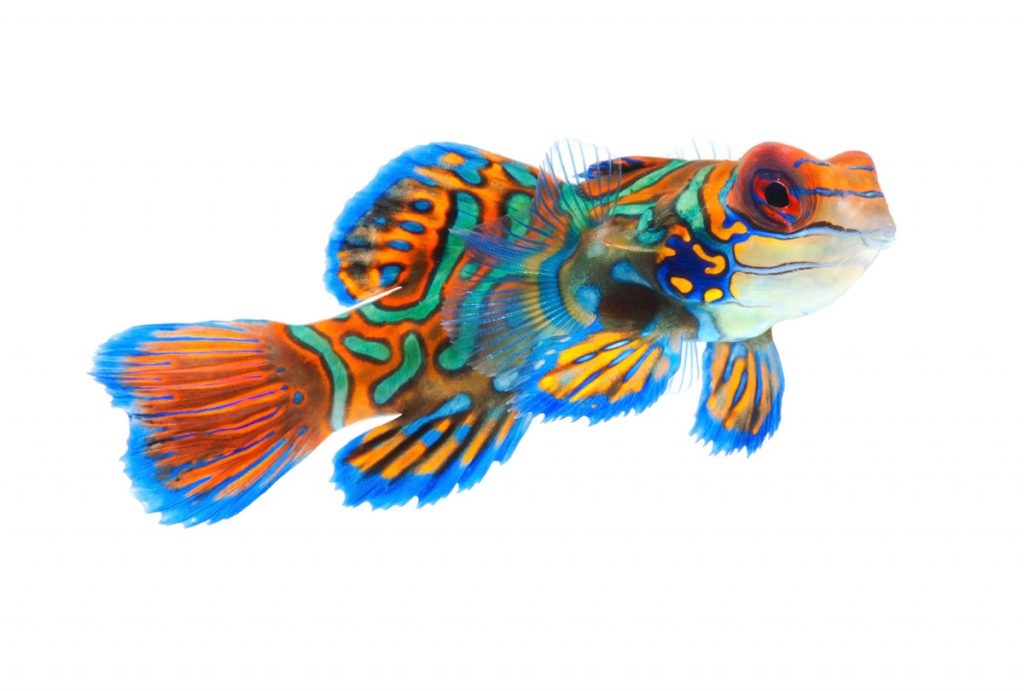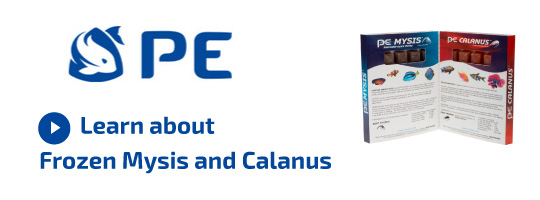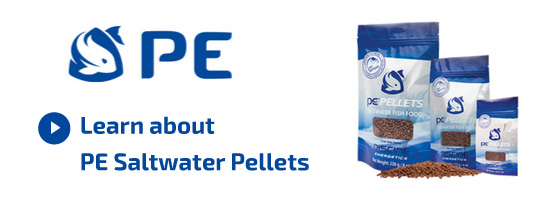Dragonets Species
Dragonets are members of the Callionymidae family, which contains approximately 19 genera and 139 species. Dragonets are a highly sought after and commonly kept group of fishes due to their interesting behaviors, small size and unique coloring and patterns.
The Mandarin Dragonet (Synchiropus splendidus) is one of the most commonly sold dragonet species. Other commonly sold dragonet species include the Spotted Mandarin Dragonet (Synchiropus picturatus), Ruby Red Dragonet (Synchiropus sycorax) and the Red Scooter Dragonet (Synchiropus stellatus).
Biology
Dragonets are a highly diverse family of fishes, found primarily in the tropical Indo Pacific. They can range in size from 1” (2.5 cm) to 12” (30 cm), however on average they tend towards the smaller side of the spectrum.
Dragonets are benthic fishes, spending their day scooting across the substrate and through rock crevices in search of zooplankton such as copepods and mysis. Male dragonets will display at one another with their dorsal fin to communicate aggression. Their highly ornate dorsal fins are also used in courtship to attract and impress females. Dragonets spawn at sunset, by rising briefly into the water column and shedding their gametes together.
Captive Care
Dragonets can make great aquarium inhabitants, provided their husbandry needs such as diet, water quality and tank space are met. Dragonets have a highly specialized diet, and it is essential to provide them with sufficient live foods while they are being trained to eat prepared foods. Many people report success using frozen copepods to transition dragonets to captive diets.
Dragonets prefer a temperature range of 72F (22C) to 80F (26C). Dragonets are generally considered reef safe as they will not harm corals or ornamental invertebrates.
Dragonets are relatively small fish and can do well in smaller reef tanks, provided ample food is available. Dragonets can display aggression towards each other, so it is best to maintain them in male/female pairs or as individuals.
Suggested Piscine Energetics Products
We suggest a diet based on Piscine Energetics Mysis, Piscine Energetics Calanus, Piscine Energetics Pellets (1mm and 2mm) and Piscine Energetics Saltwater Flakes.
What People Say
After feeding my seahorses your mysis for about 3 months; they are fat and happy!!! they give me baby seahorses (at least 300 ) each 14 days... So I'm very satisfied of your mysis.The frozen mysis is about 70 per cent of their diet.
Yvan Charbonneau Quebec
I am keeping these Indian mudskippers -- very cute -- about 3-4 inches long. I've been feeding them frozen bloodworm, and decided to try them on mysis. I feed them in a "shallows" in the 150 I have set up for them. The minute the mysis hit the water they were on it, frozen and all. They gorged until their little bellies were almost bursting. I have yet to see an aquatic creature that does not go absolutely nuts over PE Mysis.






